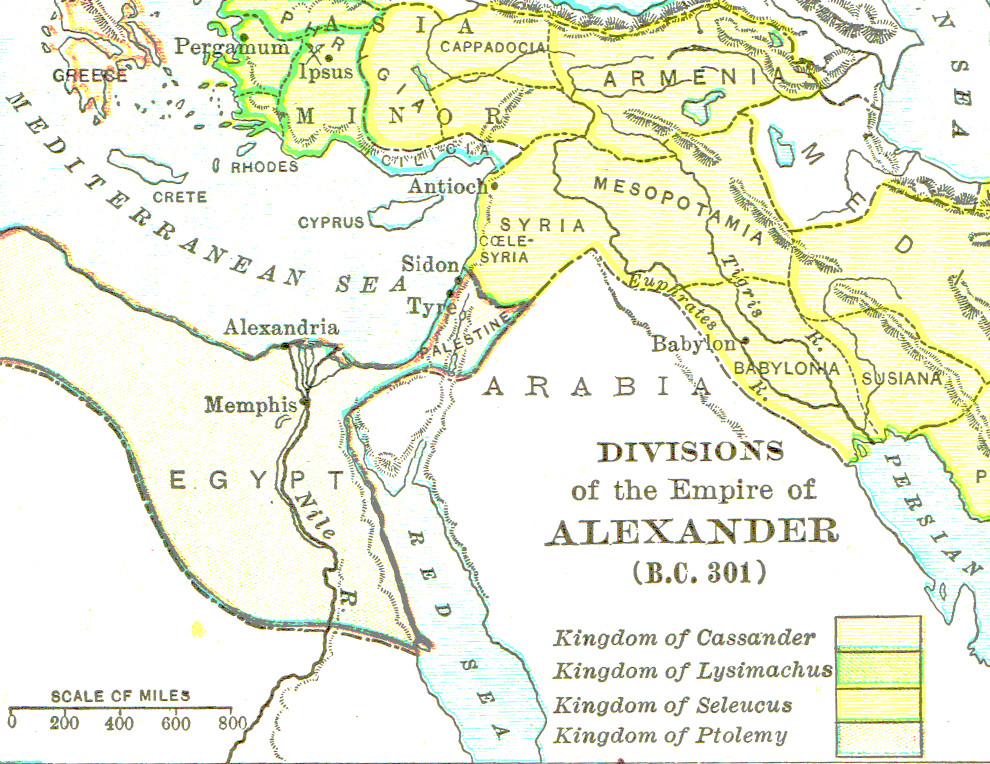Directions are a normal thing in almost anything of a historical nature, and that is also true of Scripture. The orientation of things or borders are mentioned in the accounts, and much of this is very ordinary citation of directions, but sometimes directions go beyond the ordinary.
Some of the directions relate
to how Israel
was situated in the Middle East
For instance the Kings of the North and the Kings of the South in Daniel chapter 11. The Persians came to rule the East, and Daniel’s other visions seem to indicate that the Greeks will come next (Dan 8:21). Daniels visions indicate a powerful “first king” of a Greek empire, which obviously refers to Alexander the Great. Even though Alexander conquered a considerable empire, reaching all the way to India, he died young. His empire then was split between four of his leading generals. They are represented by four horns of Dan 8:8, 22; or four wings of Dan 7:6.

The immediate point of reference in Daniel 11 seems to be Judah herself in the land of Palestine. In the times of the Greek rulers, North of Judah was the powerful Seleucid empire of the Greeks, and South of Judah was the powerful Ptolemaic Empire of Egypt.

Seen from this point of view, the Kings of the the North, and the the South of Daniel 11 begin to make some sense. We even know a great deal about these two powerful dynasties. The very first King of the North was Seleucus I Nictor (Victor), and we have images of him through ancient statuary and coins. They were the immediate winners in these contests and came to rule Palestine. The first king of the South was Ptolemy I Lagi Soter (Great Savior) and we also have images of him.

I said that Daniel 11 began to make sense, and it does, but only to a point. Then the last part of Daniel 11 doesn’t match anything we know of ancient or modern times. It is almost as if the Lord changes the subject, which in fact I think He does. It is a colloquail syntax that is often used in prophecy, with unannounced swithching back and forth between subjects, much as in a human conversation. Such is common in Biblical prophecy, with the known part being symbolic of that which is yet to come. Those of a liberal persuasion often treat these things as failed prophecies, never considering a switch of subjects, or the immediate being symbolic of things yet to come. There is a more complete discussion of Daniel 11 in Prophecy Principles.
And there are other factors concerning the North.
In ancient times it came about that Egypt was no longer the first-rate power she had been. Far stronger were the great land powers of Assyria, Babylon and Persia. But if they wanted to invade Israel or Egypt, they could not consider a direct approach. A direct approach would take these powers across logistically impassable deserts to the East of Israel. So to invade they first had to go North to the region of Haran, and then go South toward Israel or Egypt.
So after a certain point, invasions of Israel, and retribution from foreign powers tended to always come from the North.
